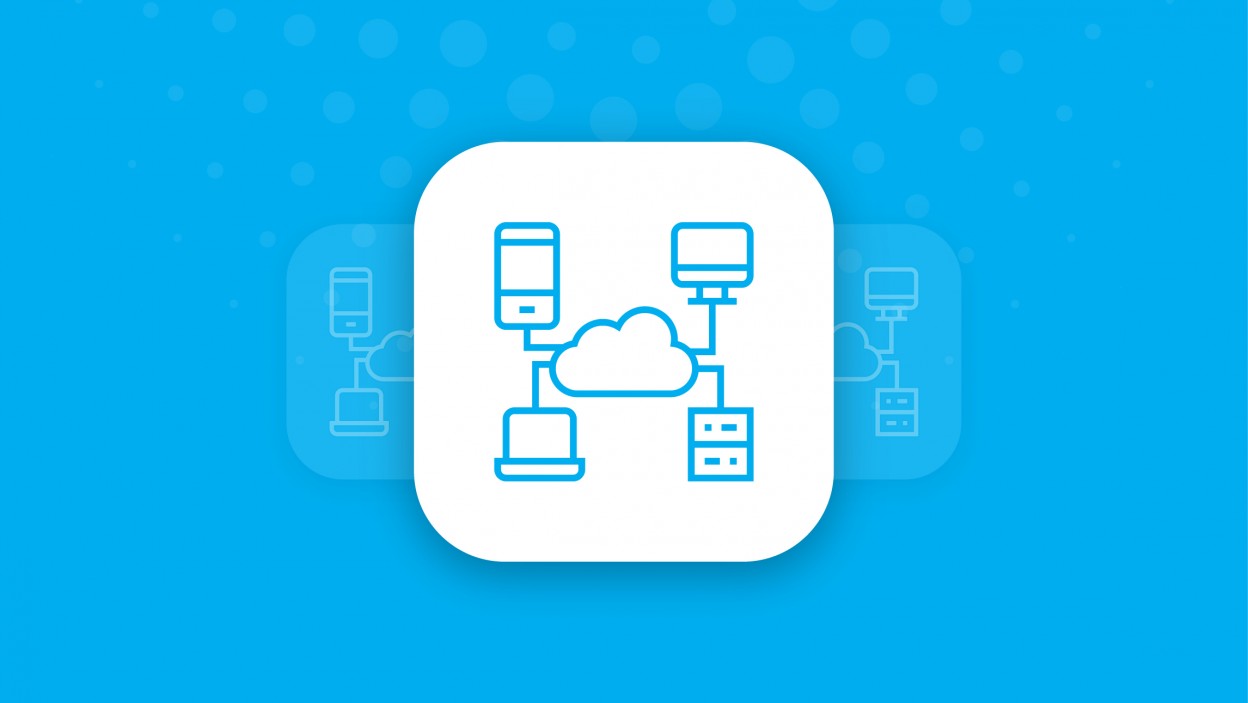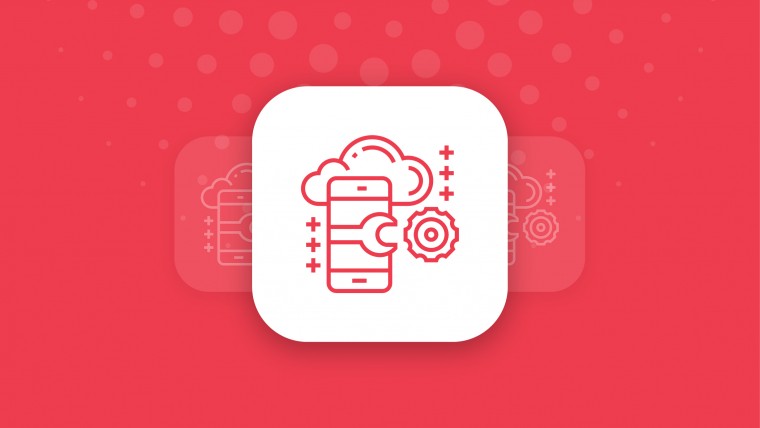Cloud computing is a broad term that refers to a collection of services that offer businesses a cost-effective solution to increase their IT capacity and functionality.
Cloud computing refers to the range of online-based solutions that allow businesses to boost their IT functionality and capacity cost-effectively.
It uses various deployment models that give the user varied levels of control over their data and the cloud services they can tap.
There are three types of cloud computing services. They are also referred to as a cloud computing stack because they are interconnected and are often built upon each other.
1. Infrastructure-as-a-service (IaaS)
This is the most basic form of cloud computing that most users access. It allows individuals and businesses to rent IT infrastructure so they do not have to buy. They primarily cater to computing power and storage needs so that companies no longer need to invest in the requisite hardware and maintenance. Now they can remotely work with a provider who accommodates whatever amount and different types of cloud storage they need at any given time. Typically works as a pay-as-you-go arrangement.
Google Compute Engine (GCE) and Amazon’s AWS EC2 are amongst the industry’s top choices. Goggle’s offering is currently considered more competitive in pricing but Amazon does have a wider network of data centers around the world.
2. Platform-as-a-service (PaaS)
This service helps developers with the tools they need to build and host web apps. Like IaaS, it reduces the need to invest in infrastructure that would support this work. Users can use PaaS to access whatever, networks, storage, servers, and databases they need to create and operate their mobile and web applications over the internet.
OpenShift is one such resource that aids in quick app development, easy deployment, and long-term maintenance. It can be deployed in Microsoft’s Azure as wither OKD (OpenShift Origin) or OpenShift Container Platform.
3. Software-as-service (SaaS)
This is primarily used for web-based apps. Cloud providers host the apps, providing enough computing power so that there is easy delivery over the internet where and when needed. Storing the apps through SaaS ensures they can be easily accessed through whatever range of devices all at once through the cloud.
Salesforce and Snowflake are good examples of this technology that come with native integrations that expand data access, migration, and scaling exponentially. Smooth and secure data migration between the two services is often needed so that CRM systems have access to sufficient customer data to aid business decision-making.
Why Moving To Cloud Is Vital?
Adopting cloud technology has become a necessity for modern-day enterprises. With marketplaces becoming increasingly more competitive, companies are being forced to become more agile. They need to transition into cloud computing to better achieve much-needed savings, efficiencies and deliver an improved customer experience.
Cloud computing facilitates better data analysis that boosts the quality and speed of current and future decision-making. Data-driven businesses are better positioned to be more competitive, develop innovations, and unlock new revenue streams that will allow them to outstrip other players in the market.
How To Deploy Cloud Computing?
With cloud computing having become more mainstream, there is a growing need for different deployment strategies to meet the different needs of many users. For each type of cloud service and its deployment strategy, users get to enjoy varying levels of flexibility, control, and management.
Understanding how different types of cloud services work and their deployment methods can help businesses determine what services best suit their needs. And in deciding what services and deployments to adopt, they will need to assess their computing, storage, and networking needs, business goals, and available resources.
There are four main options when it comes to cloud deployment models, and understanding how they differ can help in deciding what cloud services are best for your business needs.
1. Public Cloud
This is the most basic form of cloud service that is open and available to the general public. The data is stored on third-party servers that own, run, and maintain the hardware. They scale their services according to user demands. The service can be free or pay-per-use.
However, these services can sometimes be unreliable and data privacy concerns are real. The deployment method does not give users much detail on who can access their data or even where it is stored.
2. Private Cloud
Private clouds are similar in architecture to public clouds, only that they do not share space. Only one user gets access to the private cloud, ensuring better data security. Organizations with a need to
preserve their data integrity and secrecy are increasingly choosing this option. Users are also given more leeway to customize the infrastructure to suit their needs.
On the downside, all these bespoke benefits come at a higher price tag. Not just for the infrastructure but also staff training. This solution is not suited for smaller and medium enterprises that have smaller budgets to work with.
3. Hybrid Cloud
This deployment method enables connections between IT infrastructure and apps through the use of resources that are cloud-based and not cloud-based. It allows businesses to continue making some use of their on-premises infrastructure while growing into the cloud. It is often recommended by cloud computing consulting as it allows organizations to make use of what they already have in conjunction with the new technology.
Being able to choose which space to use for what gives the business more control over where strategically vital assets are stored. This model allows businesses to choose how to make use of public, private, and community deployments in the most cost and resource-efficient way.
4. Community Cloud
This deployment model is dependent on collaboration. It allows a set of users to come together and share in a private cloud server. Ideally, the users should be of a similar background requiring similar infrastructure and resources. The community cloud created provides all the users with the same data security and privacy. There is shared responsibility when it comes to management, project development, and implementation. Data sharing is made easier between users and it is cheaper than private clouds.
Although there is cost-sharing, it is still a more pricey option than public clouds. Also, sharing in a fixed amount of bandwidth capacity and storage space can be restrictive.
Common Cloud Implementation Concerns
Which cloud has the best resources?
This will likely depend on what resources your organization actually needs. Identifying the right cloud will rely on you matching these needs to what is available in the cloud computing market.
Which cloud costs more?
Generally, private clouds are the most expensive. But depending on your needs, they could be what is best for your business. A cloud consultant can help evaluate your IT needs and resources to make a suitable recommendation that will suit any budgetary limitations.
Which cloud is safest?
In terms of data privacy and security, private clouds are best. However, the cost factor often makes them unaffordable for most small and medium enterprises. Hybrid and community models can help in cutting some of the costs while affording better safety.
Which cloud should I use?
There is no universal answer to this. Different organizations have different needs and resources to work with. Not to mention cloud computing is not suited for situations where businesses do not have readily available and reliable internet access. Engaging a cloud consultant is a good way to determine if this trend is suited to your operations and how best to go about the transition.
How To Choose The Right Implementation Partner?
Choose a cloud consulting partner who:
- Understands the nature and demands of your industry and business.
- Can guide you to the optimal choice of cloud services and the deployment model that suits your needs.
- Has the ability to facilitate custom infrastructure as with private clouds, while also providing access to services available on public clouds, ultimately developing a hybrid architecture that guarantees unmatched flexibility.
- Understands the benefits, risks, and other issues associated with cloud computing and can install controls to better oversee the use of cloud services within the organization’s IT environment.
- Can develop cloud policies, standards, and an operating model to manage cloud technology solutions.
- Can build proper mechanisms that will see to the adherence of necessary security standards and protocols.
- Provides reasonable guarantees on their level of capacity, support, response time, and availability as per the Service Level Agreement (SLA).
The iAgility Difference
At iAgility we understand that every cloud implementation project is different and all projects large or small needs the same commitement to quality service, measurable results and on time delivery. That’s why at iAgility your personal representative will help you connect with the most suited cloud consultants for your project.
Our extensive consultant vetting process includes personality and personal assessment tests we also thoroughly checks every consultant’s authenticity and verifies past employers’ recommendations to ensure a reliable pool of talented independent cloud consultants. You can view test results on your personalized onlined dashboard and even schedule and conduct interviews right from your dashboard.
At iAgility our commitment to leaner and innovative business model transformation has allowed us to reduce our operating costs and we take pride in passing on these savings to our clients.
Conclusion
Different organizations have different priorities in trying to meet their business goals. For some scalability and flexibility are key, while for others data privacy and reliability will top the list. Understanding what technical requirements are needed and which model best matches these needs will be instrumental in making the transition to cloud computing.
Given the complexity of this process, it is advisable to engage cloud migration consulting professionals that help in strategy execution and in choosing the best model for your business. This will ensure you are investing in the right models that will boost your business performance while limiting future risks.








4 Characteristics of high performing transformation teams
5 Reasons Why Strategic Decision Making Is Most Important In Business Growth
Transitioning from a Corporate to Consulting Role
Top 10 Tips for Healthy Work-Life Balance
Should You Become An Independent Consultant?
8 Characteristics of great consultants. Do you have what it takes?
4 Characteristics of high performing transformation teams
Types of Cloud Computing